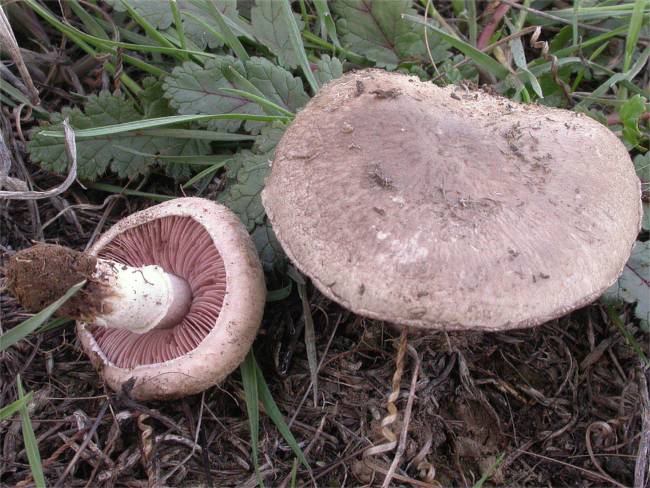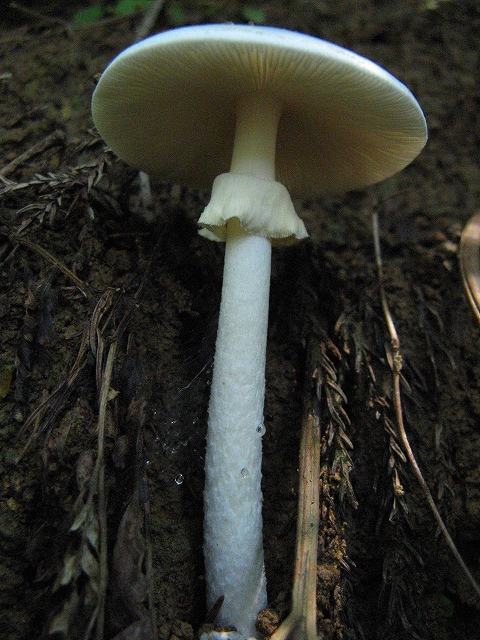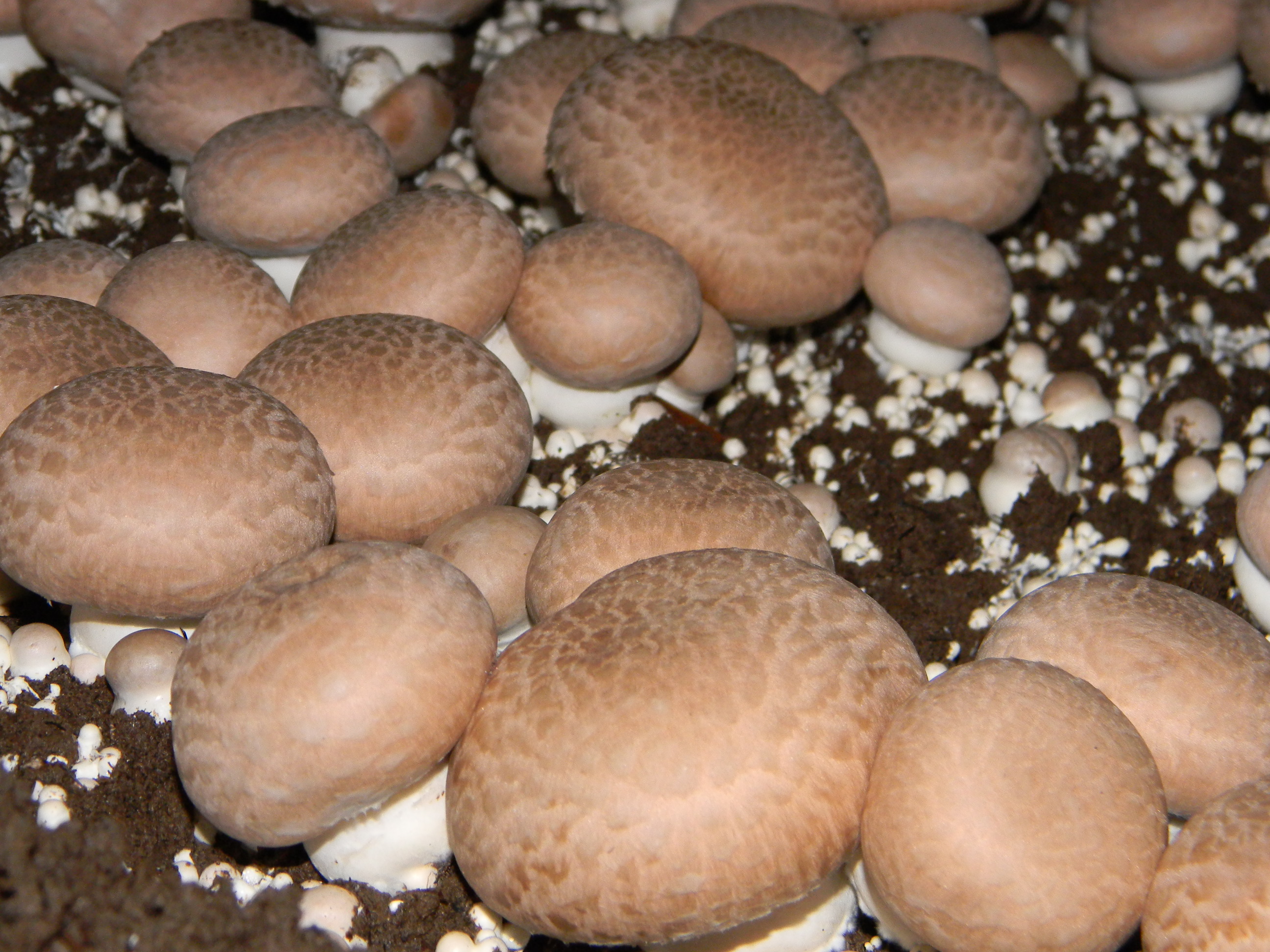|
Agaricales Genera
The Agaricales are an order of fungi in the division Basidiomycota. As originally conceived, the order contained all the agarics (gilled mushrooms), but subsequent research has shown that not all agarics are closely related and some belong in other orders, such as the Russulales and Boletales. Conversely, DNA research has also shown that many non-agarics, including some of the clavarioid fungi (clubs and corals) and gasteroid fungi (puffballs and false truffles) belong within the Agaricales. The order has 46 extant families, more than 400 genera, and over 25,000 described species, along with six extinct genera known only from the fossil record. Species in the Agaricales range from the familiar ''Agaricus bisporus'' (cultivated mushroom) and the deadly '' Amanita virosa'' (destroying angel) to the coral-like ''Clavaria zollingeri'' (violet coral) and bracket-like ''Fistulina hepatica'' (beefsteak fungus). History, classification and phylogeny In his three volumes of ''Systema M ... [...More Info...] [...Related Items...] OR: [Wikipedia] [Google] [Baidu] |
Aptian
The Aptian is an age (geology), age in the geologic timescale or a stage (stratigraphy), stage in the stratigraphic column. It is a subdivision of the Early Cretaceous, Early or Lower Cretaceous epoch (geology), Epoch or series (stratigraphy), Series and encompasses the time from 121.4 ± 1.0 annum, Ma to 113.0 ± 1.0 Ma (million years ago), approximately. The Aptian succeeds the Barremian and precedes the Albian, all part of the Lower/Early Cretaceous. The Aptian partly overlaps the upper part of the Western Europe, Western European Urgonian Stage. The Selli Event, also known as OAE1a, was one of two oceanic anoxic events in the Cretaceous Period, which occurred around 120 annum, Ma and lasted approximately 1 to 1.3 million years, being marked by enhanced silicate weathering, as well as ocean acidification. The Aptian extinction was a minor extinction event hypothesized to have occurred around 116 to 117 Ma. Stratigraphic definitions The Aptian was named after the small city o ... [...More Info...] [...Related Items...] OR: [Wikipedia] [Google] [Baidu] |
Family (biology)
Family (, : ) is one of the eight major hierarchical taxonomic ranks in Linnaean taxonomy. It is classified between order and genus. A family may be divided into subfamilies, which are intermediate ranks between the ranks of family and genus. The official family names are Latin in origin; however, popular names are often used: for example, walnut trees and hickory trees belong to the family Juglandaceae, but that family is commonly referred to as the "walnut family". The delineation of what constitutes a family—or whether a described family should be acknowledged—is established and decided upon by active taxonomists. There are not strict regulations for outlining or acknowledging a family, yet in the realm of plants, these classifications often rely on both the vegetative and reproductive characteristics of plant species. Taxonomists frequently hold varying perspectives on these descriptions, leading to a lack of widespread consensus within the scientific community ... [...More Info...] [...Related Items...] OR: [Wikipedia] [Google] [Baidu] |
Paul Kummer
Paul Kummer (22 August 1834 – 6 December 1912) was a Minister (Christianity), minister, teacher, and scientist in Zerbst, Germany, known chiefly for his contribution to mycological botanical nomenclature, nomenclature. Earlier Taxonomy (biology), classification of agarics by pioneering fungal taxonomist Elias Magnus Fries designated only a very small number of genus, genera, with most species falling into ''Agaricus''. These few genera were divided into many ''tribus'' ("tribes"; not Tribe (biology), tribes in the modern sense). In his 1871 work, ''Der Führer in die Pilzkunde'', Kummer raised the majority of Fries ''"tribus"'' to the status of genus, thereby establishing many of the generic names for agarics that are in use to this day. In 1874 he issued the work ''Der Führer in die Flechtenkunde'' with numbered lichen specimens arranged in two plates like an exsiccata. From 1857 to 1863, he worked as a private lecturer, then served as a curate in Zerbst (1863–1877). [...More Info...] [...Related Items...] OR: [Wikipedia] [Google] [Baidu] |
Petter Karsten
Petter Adolf Karsten (16 February 1834 – 22 March 1917) was a Finnish mycologist, the foremost expert on the fungi of Finland in his day, and known in consequence as the "father of Finnish mycology". Karsten was born in Merimasku near Turku, studied at the University of Helsinki, and then moved to the inland of Tammela, where he spent most of his life with teaching botany and doing research at the Mustiala Agriculture Institute (now the Faculty of Agriculture of the HAMK University of Applied Sciences). He amassed a vast collection, both by his own efforts and those of his correspondents, and named about 200 new genera and 2,000 new species. Between 1861 and 1870 Karsten edited the exsiccata series ''Fungi Fenniae exsiccati. Samling af Finska svampar'' with 1,000 numbers. In his mycological studies he extensively used the microscope and can be considered as the pioneer of fungal microscopy. ''Karstenia'', the international journal of mycology published by the Finnish My ... [...More Info...] [...Related Items...] OR: [Wikipedia] [Google] [Baidu] |
Claude-Casimir Gillet
Claude Casimir Gillet (19 May 1806 in Dormans, department of Marne – 1 September 1896 in Alençon), was a French botanist and mycologist. He initially trained as a medical doctor and veterinarian. As a veterinarian, he worked for four years in Africa. Around 1853 he developed a passion for mycology, subsequently publishing a number of works on the subject. In 1867 he became a corresponding member of the ''Société Linnéenne de Normandie''. Gillet was the taxonomic authority of the genera '' Tubaria'' (initially named a subgenus of ''Agaricus'' by Worthington George Smith) and '' Microglossum''. MycoBank. International Mycological Association He was honoured in 1899, when botanists P.A.Saccardo & P.Sydow published '' [...More Info...] [...Related Items...] OR: [Wikipedia] [Google] [Baidu] |
Agaricus
''Agaricus'' is a genus of mushroom-forming fungi containing both edible and poisonous species, with over 400 members worldwide and possibly again as many disputed or newly discovered species. The genus includes the common ("button") mushroom ('' A. bisporus'') and the field mushroom ('' A. campestris''), the dominant cultivated mushrooms of the West. Taxonomy Several origins of genus name ''Agaricus'' have been proposed. It possibly originates from ancient Sarmatia Europaea, where people Agari, promontory Agarum and a river Agarus were known (all located on the northern shore of Sea of Azov, probably, near modern Berdiansk in Ukraine). Note also Greek , agarikón, "a sort of tree fungus" (There has been an ''Agaricon'' Adans. genus, treated by Donk in ''Persoonia'' 1:180.) For many years, members of the genus ''Agaricus'' were given the generic name ''Psalliota'', and this can still be seen in older books on mushrooms. All proposals to conserve ''Agaricus' ... [...More Info...] [...Related Items...] OR: [Wikipedia] [Google] [Baidu] |
Elias Fries
Elias Magnus Fries (15 August 1794 – 8 February 1878) was a Swedish mycologist and botanist. He is sometimes called the "Linnaeus of Mycology". In his works he described and assigned botanical names to hundreds of fungus and lichen species, many of which remain authoritative today. Career Fries was born at Femsjö ( Hylte Municipality), Småland, the son of the pastor there. He attended school in Växjö. He acquired an extensive knowledge of flowering plants from his father. In 1811 Fries entered Lund University where he studied under Carl Adolph Agardh and Anders Jahan Retzius. He obtained his doctorate in 1814. In the same year he was appointed an associate professorship in botany. Fries edited several exsiccata series, the first starting in 1818 under the title ''Lichenes Sveciae exsiccati, curante Elia Fries'' and the last together with Franz Joseph Lagger under the title ''Hieracia europaea exsiccata''. He was elected a member of the Royal Swedish Academy ... [...More Info...] [...Related Items...] OR: [Wikipedia] [Google] [Baidu] |
Systema Mycologicum
Systema Mycologicum is a systematic classification of fungi drawn up in 1821 by the Swedish mycologist and botanist Elias Fries Elias Magnus Fries (15 August 1794 – 8 February 1878) was a Swedish mycologist and botanist. He is sometimes called the "Linnaeus of Mycology". In his works he described and assigned botanical names to hundreds of fungus and lichen sp .... It took 11 years to complete. References External linksSystema Mycologicum at biodiversitylibrary.org Mycological literature {{fungus-book-stub ... [...More Info...] [...Related Items...] OR: [Wikipedia] [Google] [Baidu] |
Fistulina Hepatica
''Fistulina hepatica'', commonly known as the beefsteak fungus, beefsteak polypore, poor man's steak, ox tongue, or tongue mushroom, is a bracket fungus classified in the Agaricales. As its common names suggest, it visually resembles a slab of meat. The species can be found in Europe, Africa, Australia, and North America. It is edible when cooked, although older specimens may need special preparation. Taxonomy ''Fistulina'' is classified in the family Fistulinaceae; molecular studies suggest close relations to the ''agaric'' mushroom '' Schizophyllum'' in the Schizophyllaceae (in the ''schizophylloid'' clade), but in the separate sister ''fistulinoid'' clade. ''Fistulina'' is a cyphelloid genus, meaning that it is closely related to gilled fungi, but its fertile surface consists of smooth cup-shaped elements instead of gills. The underside (the hymenium) is a mass of tubules which represent a "reduced" form of the ancestral gills. Etymology The genus name is a dim ... [...More Info...] [...Related Items...] OR: [Wikipedia] [Google] [Baidu] |
Clavaria Zollingeri
''Clavaria zollingeri'', commonly known as the violet coral or the magenta coral, is a widely distributed species of fungus. It produces striking tubular, purple to pinkish-violet basidiocarp, fruit bodies that grow up to tall and wide. The extreme tips of the fragile, slender branches are usually rounded and brownish. Variations in branching and color can often be used to distinguish ''C. zollingeri'' from similarly colored coral fungi such as ''Alloclavaria purpurea'' and ''Clavulina amethystina'', although light microscopy, microscopy is required to reliably identify the latter species. A typical member of the Clavarioid fungi, clavarioid or club fungi, ''C. zollingeri'' is Saprotrophic nutrition, saprobic, deriving nutrients by breaking down organic matter. The fruit bodies are typically found growing on the ground in woodland Forest floor, litter or in grasslands. Taxonomy The species was first described scientifically by French mycologist Joseph-Henri Léveil ... [...More Info...] [...Related Items...] OR: [Wikipedia] [Google] [Baidu] |
Amanita Virosa
''Amanita virosa'' is a species of fungus in the class Agaricomycetes. In the UK, it has the recommended English name of destroying angel and is known internationally as the European destroying angel. Basidiocarps (fruit bodies) are agaricoid (mushroom-shaped) and pure white with a ring on the stem and a sack-like volva at the base. The species occurs in Europe and northern Asia. It was formerly reported from North America, but similar-looking American species like '' A. bisporigera'' and '' A. ocreata'' are distinct. As the name suggests, the destroying angel is poisonous. Taxonomy ''Amanita virosa'' was first described in 1838 by Swedish mycologist Elias Magnus Fries as ''Agaricus virosus'', but this name is illegitimate since it had already been used for an earlier and different species. ''Amanita virosa'' was legitimately published by French mycologist Louis-Adolphe Bertillon in 1866. Etymology The specific epithet is derived from the Latin adjective ''virōsu ... [...More Info...] [...Related Items...] OR: [Wikipedia] [Google] [Baidu] |
Agaricus Bisporus
''Agaricus bisporus'', commonly known as the cultivated mushroom, is a basidiomycete mushroom native to grasslands in Eurasia and North America. It is cultivated in more than 70 countries and is one of the most commonly and widely consumed mushrooms in the world. It has two color states while immature – white and brown – both of which have various names, with additional names for the mature state, such as chestnut, portobello, portabellini, button and champignon de Paris. ''A. bisporus'' has some poisonous lookalikes in the wild, such as '' Entoloma sinuatum''. Description The pileus or cap of the original wild species is a pale grey-brown, with broad, flat scales on a paler background and fading toward the margins. It is first hemispherical before flattening out with maturity, typically measuring in diameter. The narrow, crowded gills are free and initially pink, then red-brown, and finally a dark brown with a whitish edge from the cheilocystidia. The cylindrical ... [...More Info...] [...Related Items...] OR: [Wikipedia] [Google] [Baidu] |










